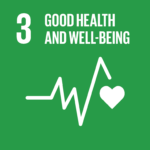The Microforest utilizes the photosynthesis process of microalgae to filter pollutants and reduce carbon dioxide levels, contributing to better air quality for the thousands of daily mosque visitors.
SOLO, Indonesia — In an innovative leap towards urban sustainability, the Sheikh Zayed Mosque in Solo has become home to an unusual new resident: a capsule of swirling green liquid that its creators claim can purify air as effectively as five 15-year-old trees.
RELEVANT SUSTAINABLE GOALS


The Microforest
This “liquid tree,” dubbed Microforest 100, was installed on June 17, 2024, marking a significant milestone in the application of microalgae technology for environmental remediation. The project is the brainchild of researchers from Gadjah Mada University (UGM), spearheaded by Prof. Ir Arief Budiman of the Department of Chemical Engineering.
The Microforest, a dense green capsule standing two meters tall, houses microalgae — microscopic organisms typically found in fresh or saltwater. These tiny powerhouses are capable of photosynthesis, absorbing carbon dioxide and releasing oxygen at rates up to 25 times more efficient than traditional plants, according to the researchers.
“This prototype is one of the downstream products of our collaboration with UGM’s Microalgae Biorefinery Center of Excellence,” said Heru Kunadi, President Commissioner of Algatech Nusantara, the company partnering with UGM to bring this technology to market. “The deep green liquid you see is Microforest, producing air equivalent to five 15-year-old trees.”
From Lab to Mosque: Photosynthesis Reimagined
The choice of the Sheikh Zayed Mosque as the site for this pilot installation was strategic. With daily visitor numbers ranging from 10,000 to 30,000, the mosque presents an ideal testing ground for the technology’s efficacy in high-traffic, enclosed spaces.
Rangga Wishesa Pratama, CEO of Algatech Nusantara, explained that the Microforest acts as a natural bio-filtration system. “It utilizes the photosynthesis process of microalgae to filter pollutants and reduce carbon dioxide levels, contributing to better air quality for the thousands of daily mosque visitors,” he said.
The technology’s potential extends beyond religious spaces. Heru Kunadi envisions applications in offices, homes, and hotels, offering a rapid alternative to traditional tree planting for air purification. Each unit can reportedly clean the air within a 25-square-meter area.
While the current focus is on enclosed spaces, where the Microforest performs optimally, the team behind this green innovation has ambitious plans. Heru Kunadi expressed hopes to install similar units in prominent religious sites worldwide, including the Al Zayed Mosque in Abu Dhabi and the holy mosques in Mecca and Medina.
This development represents a confluence of academic research and alumni entrepreneurship. Leonardus Arda, a UGM alumnus who facilitated the mosque installation, emphasized the ongoing collaboration between graduates and their alma mater.
Lead image courtesy of Special (Microforest equivalent to 5 fifteen-year-old trees installed at Sheikh Zayed Grand Mosque in Surakarta)
You may also be interested in :
Urban Tree: A Critical Shield Against Rising Urban Heat, Report Finds




